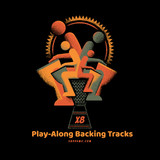Playing the conga - Quick and easy steps to get you drumming in no time
Hand drumming is an ancient art form, and the conga is no exception. The term 'conga' is an American translation for the Cuban drum term 'tumbadora'. Popularized when Latin and salsa music made its way into America, the conga drum is an easy to enjoy instrument. Anyone who picks up a conga drum will want to spend hours tapping away and experimenting with sounds. Although it may look like a simple instrument to pick up, playing the congas requires a certain technique that you can learn through practice.
Choose your conga drum by experimenting with several different types. You can buy wood or fiberglass congas. There are also different sizes of congas, and each size will produce a different sound. A Conguero will play up to 3 congas at a time, and each drum will have a different chord.
As you play your conga drum, you will find that you can create several different sounds and pitches. Begin learning to play by experimenting on your own. Slap down on the drum in the center with your palm, or tap the outside edges with your fingertips. You'll develop an ear for pitch and different sounds as you progress.
There are 5 simple strokes for playing congas. Using 4 fingers near the rim of the drum, you can create a clear, melodic sound. If you strike the same 4 fingers against the drum and hold them, you create a slightly muffled sound. These tones are otherwise known as open and muffled strokes. To achieve these tones, you can also hit the drum in a similar fashion with your knuckles, recoiling upward as you rhythmically beat the drum.
Bass tones are slightly different in that you use your full palm while beating the drum. Striking in this way can produce a low register, quiet sound. Alter your beats with finger taps to produce rhythm.
Slapping the drum creates a loud, snapping sound. Slapping is one of the hardest strokes to master, as you must cup your hand a specific way in order to create the right sound. Slapping can involve your fingers as well as the heel of your hand, and you can alternate fingers and heel to create a fast beat.
Touching is the last stroke, and involves simply touching the drumhead. As with slapping, you can alternate the fingers and the heel of the hand to achieve different sounds.
When playing the conga, you can get your entire body into the mix. Bend forward with your elbows to allow more pressure on your hands and you can create new sounds.
As you progress as a conga player, you can learn to use several congas together. Conga players have been known to beat on three drums and a bongo, creating a symphony of sound.
By tuning your conga, you can create different pitches of sound. Congas of the past were tuned by heating the skin on the drumhead. Fiberglass congas now have a screw and lug system, and you can adjust the tightness by adjusting the screws. Tune your conga in a clockwise rotation, adjusting for tone and pitch.
Practice is the key to becoming a successful conga player. Hand drumming has the reputation of looking simple, but to achieve a rhythm and accompany other musicians you will need to learn how to play properly. Remember, master conguero Armando Peraza, in an effort to fill a spot in a New York band, picked up the conga in one afternoon. Let yourself experience the music, and you will pick it up in no time.
Recent Posts
-
X8 Drums Play-Along Backing Tracks
The new X8 Play-Along Series is being produced for our musician friends wanting a fresh way to work …9th Feb 2025 -
What is the Best Size Djembe for Beginners?
If you're new to the world of percussion and interested in learning the djembe, you're in for a t …16th Jul 2024 -
The Benefits of Becoming a Drumming Teacher: Transforming Passion into Profession
Why become a drumming teacher? Becoming a drumming teacher is an excellent way to share your pas …22nd May 2024



